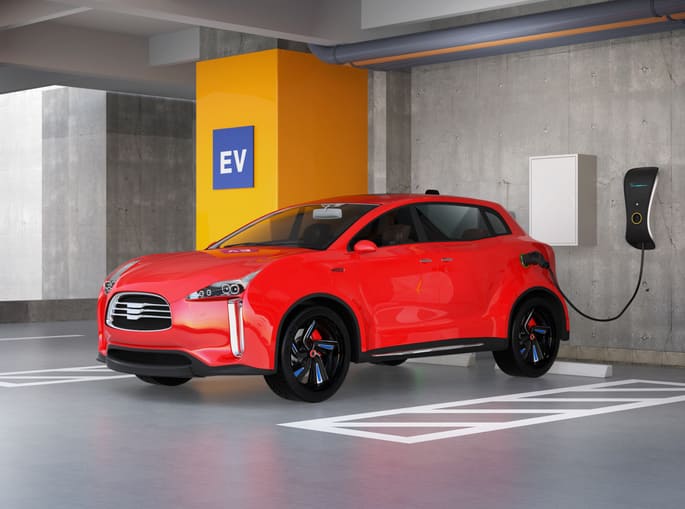The automobile industry is on the brink of a transformative era with the rise of electric vehicles (EVs). As concerns about climate change and environmental sustainability intensify, EVs have emerged as a promising solution to reduce carbon emissions and reliance on fossil fuels. This comprehensive guide offers an in-depth understanding of electric vehicles, covering their environmental impact and the technology behind them to help readers navigate the exciting and evolving world of EVs.
What is an Electric Vehicle?
An electric vehicle (EV) operates on electricity instead of an internal combustion engine, which generates power by burning fuel and gases. Consequently, EVs are considered potential replacements for current vehicles to tackle rising pollution, global warming, and depleting natural resources. Although the concept of electric vehicles has existed for a long time, it has gained significant attention in the past decade due to fuel-based vehicles’ increasing carbon footprints and other environmental impacts. You can find some of the best EV models in India, like the Tata Tigor EV, Tata Nexon EV, Tata Tiago EV, MG ZS EV, Tata Punch EV, Citroen E-C3, etc.
Types of Electric Vehicles
Battery Electric Vehicles (BEVs)
BEVs must be plugged in to recharge because they only run on electricity. Since they have zero emissions, they are ideal for short—to medium-distance journeys.
Plug-in Hybrid Electric Vehicles (PHEVs)
PHEVs allow drivers to run on fuel or electricity by combining an electric motor with an engine. For people who desire the advantages of an EV with the safety of a backup petrol engine, they are a fantastic alternative.
Environmental Impact and Benefits of Electric Vehicles
One of the key advantages of electric vehicles is their substantial contribution to reducing carbon emissions and combating air pollution. Unlike traditional internal combustion engine vehicles that rely on fossil fuels, EVs run on electricity, which can be generated from renewable energy sources. By transitioning to electric vehicles, individuals can play a crucial role in mitigating climate change and enhancing air quality.
Energy Efficiency Compared to Traditional Vehicles
Electric vehicles possess inherent energy efficiency compared to their traditional counterparts. While internal combustion engines often waste energy through heat dissipation, electric motors efficiently convert energy from the power source to the wheels. This efficiency not only aids in environmental preservation but also results in cost savings for EV owners in terms of energy consumption.
Cost Savings and Incentives for EV Ownership
Electric vehicles present significant long-term cost benefits, particularly when factoring in reduced maintenance expenses and government incentives. EVs feature fewer moving components compared to traditional vehicles, leading to diminished wear and tear and a lower probability of breakdowns. Moreover, numerous governments globally offer incentives like tax credits, rebates, and access to parking, further enhancing the attractiveness of transitioning to electric vehicles. For instance, the Tata Tigor EV price is quite affordable in its segment, which has gained huge attention in the Indian automotive industry since its introduction.
Supporting Renewable Energy Adoption
As the global transition toward renewable energy sources accelerates, electric vehicles emerge essential for the broader sustainability landscape. EV owners have the opportunity to actively support the expansion of renewable energy infrastructure by charging their vehicles with electricity sourced from sources such as solar or wind power. This collaboration between electric vehicles and renewable energy represents a significant stride toward forging a cleaner and more sustainable future.
Key Components and Technology in Electric Vehicles
Battery Technology and Range
At the core of every electric vehicle lies its battery, and advancements in battery technology have played a pivotal role in the increasing adoption of EVs. Lithium-ion batteries, renowned for their high energy density, have become the norm for electric vehicles, providing remarkable ranges and expedited charging times. Ongoing research and development endeavours in battery technology are focused on enhancing energy storage capabilities, driving down costs, and augmenting overall performance.
Electric Motors and Drivetrains
Electric vehicles utilise electric motors to propel the wheels, distinguishing them from internal combustion engines with intricate transmissions. Typically featuring a single-speed transmission, EVs offer a smoother and more efficient driving experience. The simplicity of electric drivetrains enhances the overall reliability of EVs, necessitating minimal maintenance while delivering instant torque for responsive acceleration.
Charging Infrastructure and Options
The production of electric vehicles is intricately linked to the development of charging infrastructure. Charging alternatives range from conventional home charging utilising a standard electrical outlet to rapid-charging stations capable of replenishing a substantial portion of the battery within a brief timeframe. Public charging networks are consistently expanding, furnishing EV owners with convenient solutions for recharging vehicles while travelling.
- Types of Charging Stations
Electric car charging stations are available in various styles to meet varying requirements. While Level 2 chargers offer quicker charging rates appropriate for residential and commercial use, Level 1 chargers are common household outlets that give sluggish charging. A DC fast charger is the fastest option for quickly charging EVs while on the go.
- Charging Networks
Around the world, charging networks have been set up to accommodate the increasing number of electric vehicles on the road. Companies have established extensive charging station networks for the convenience of electric car owners. The broad adoption of electric vehicles depends on these networks.
Advanced Features and Connectivity in EVs
Electric vehicles frequently feature advanced functionalities that elevate the driving experience. These may encompass regenerative braking systems, which harness energy during deceleration to enhance overall efficiency. Moreover, EVs often integrate sophisticated infotainment systems and connectivity features, enabling users to monitor and control their vehicles remotely via smartphone applications.
The Future of Electric Vehicles
Ongoing technological innovations drive the future of electric vehicles. Advancements in battery technology, electric motors, and vehicle connectivity are shaping the next generation of EVs. Features like autonomous driving capabilities, improved energy storage, and enhanced charging infrastructure pave the way for a more sustainable and efficient transportation system. Furthermore, compared to non-EV model costs like Hyundai Venue price in Chennai, the cost of EV models will be higher initially before it gets a robust infrastructure. So, it is anticipated that EVs will likely get more attention from environment-conscious buyers.
Conclusion
As consumer demand for electric vehicles rises, market trends indicate a shift towards electric mobility. Governments worldwide are implementing policies to incentivise EV adoption, including subsidies, tax credits, and infrastructure development. With increasing awareness of environmental issues and the benefits of electric vehicles, the future looks promising for the widespread adoption of EV technology.
In conclusion, the rapid advancement of electric vehicle technology signifies a pivotal shift towards a greener and more sustainable future. With increasing awareness of environmental concerns and the ongoing development of EV infrastructure, the era of electric vehicles is poised to reshape the automotive landscape. As we embrace the rise of EV cars, we pave the way for a cleaner and more efficient transportation system that promises a brighter tomorrow.




































